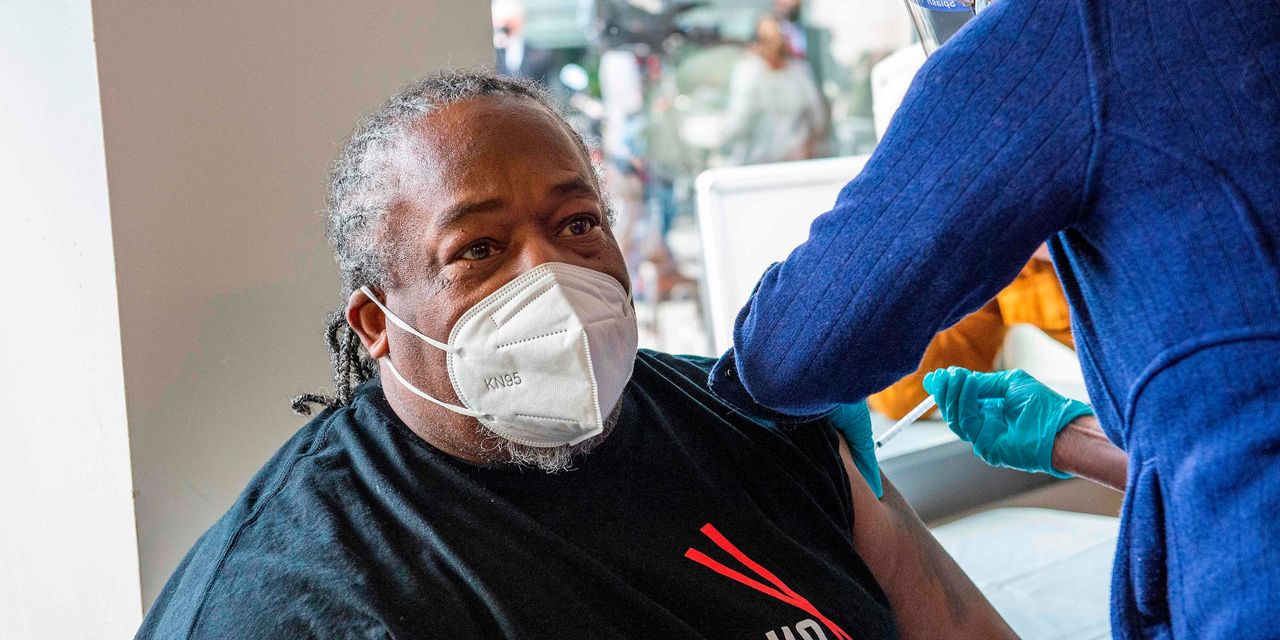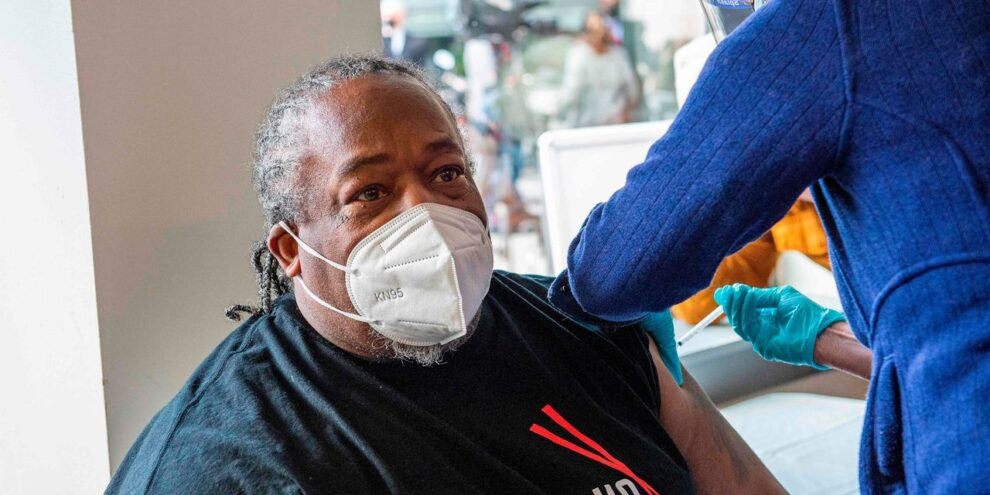
Black Americans in some parts of the country will have to travel farther than their white counterparts to get vaccinated against COVID-19, a new white paper suggests, highlighting the importance of deploying mobile vaccination clinics to reach people facing transportation barriers.
Researchers from the University of Pittsburgh School of Pharmacy and West Health Policy Center mapped out locations where people would likely be able to receive a COVID-19 vaccine, including community pharmacies, hospital outpatient departments, federally qualified health centers and rural health clinics, and estimated driving distances for a synthetic-population sample of Americans to their closest facility.
In 69 counties, including 23 in urban areas, Black residents were at greater risk of having to drive farther than a mile to their nearest potential vaccination location, the study found. These counties, which accounted for about 26.3 million people in total, were most heavily concentrated in Georgia, Mississippi, Alabama, Louisiana, Texas and Virginia.
“My inference is that we know Black Americans have historically less resources [and] higher health disparities,” Lucas Berenbrok, an assistant professor at the Pitt School of Pharmacy and the study’s first author, told MarketWatch. “So it’s not so surprising that in some places, there are going to be more barriers for them. Driving distance is one of those.”
Black Americans, along with Latino and Native Americans, have also contracted COVID-19, been hospitalized with the disease and died from it at higher rates than white Americans, Centers for Disease Control and Prevention data show.
“ ‘You’re just adding to the likelihood that someone would not be vaccinated.’ ”
“The vaccine is very important for Black Americans to receive — and we need to make it easier for them to get it, not harder,” Berenbrok said.
The urban areas that showed disparities included the counties that cover Atlanta, Ga.; Dallas, Houston and Fort Worth, Texas; Detroit, Mich.; New Orleans, La., and New York City.
Meanwhile, in 94 counties, Black residents were at a significantly higher risk for having to drive farther than 10 miles to their nearest facility, the study found.
A 10-mile driving distance may not be a big deal for someone who owns a car and can drive to a pharmacy parking lot — but a five-mile driving distance for a person of color, or even a white American without access to a car, could be onerous, Berenbrok said. Black households are less likely than other groups to have access to a vehicle, data show.
Public-health professionals are also working to address vaccine hesitancy in Black communities. Some of that hesitancy flows from mistrust of the medical establishment, the result of a history of medical racism and experimentation on people of color.
In a Kaiser Family Foundation survey conducted in January, Black adults (43%) were among the most likely groups to say they want to “wait and see” how the vaccine is working for other people, though that number was down from 52% a month earlier.
Black Americans’ vaccination concerns
Top concerns among Black people who haven’t yet been vaccinated include the unknown long-term side effects of the vaccines (86%), the potential for serious side effects (75%) and worries that the vaccines aren’t as safe as they are said to be (75%).
“When you layer on that extra barrier of distance and travel to getting a vaccine, on top of things that already prevent people from getting a vaccine, you’re just adding to the likelihood that someone would not be vaccinated,” Berenbrok said.
The researchers, who launched an open-access map tool in December to identify areas and populations that may have lower access to COVID-19 vaccines, suggested mobile-vaccination units and in-home vaccination services from community pharmacies could play a key role in reducing the transportation barrier.
President Biden’s COVID-19 vaccination plan does include a goal to “deploy mobile vaccination clinics in the most hard-to-reach communities and to support those who face challenges accessing vaccination sites, including individuals who live in underserved urban and rural areas.”
Given the wide geographic variation in access to vaccine locations at the county level, officials should pursue “a data-driven approach” to meet existing local infrastructures’ potential limitations, the paper said. “We really hope that authorities will use the data and the map to help reach people that they couldn’t before,” Berenbrok added.
Some early reports, including a Kaiser Health News analysis last month of data from 16 state health departments that reported vaccine recipients’ race and ethnicity, point to the share of vaccinated Black Americans being lower than the share of vaccinated white people.
A CDC report published in early February found that race and ethnicity data were “unknown or not reported” in almost half (48%) of people who received COVID-19 vaccines. Of the 52% whose race and ethnicity data were available, 60% were white, nearly 12% were Hispanic or Latino, 6% were Asian, 5% were Black and 2% were American Indian or Alaska Native (AI/AN).
These findings, the CDC said, “underscore the need for more complete reporting of race and ethnicity data at the provider and jurisdictional levels to ensure rapid detection of and response to potential disparities in COVID-19 vaccine administration.”
“Because persons who are Black, AI/AN, or Hispanic have been found to have more severe outcomes from COVID-19 than persons who are White, careful monitoring of vaccination by race/ethnicity is critical,” the report said.











Add Comment